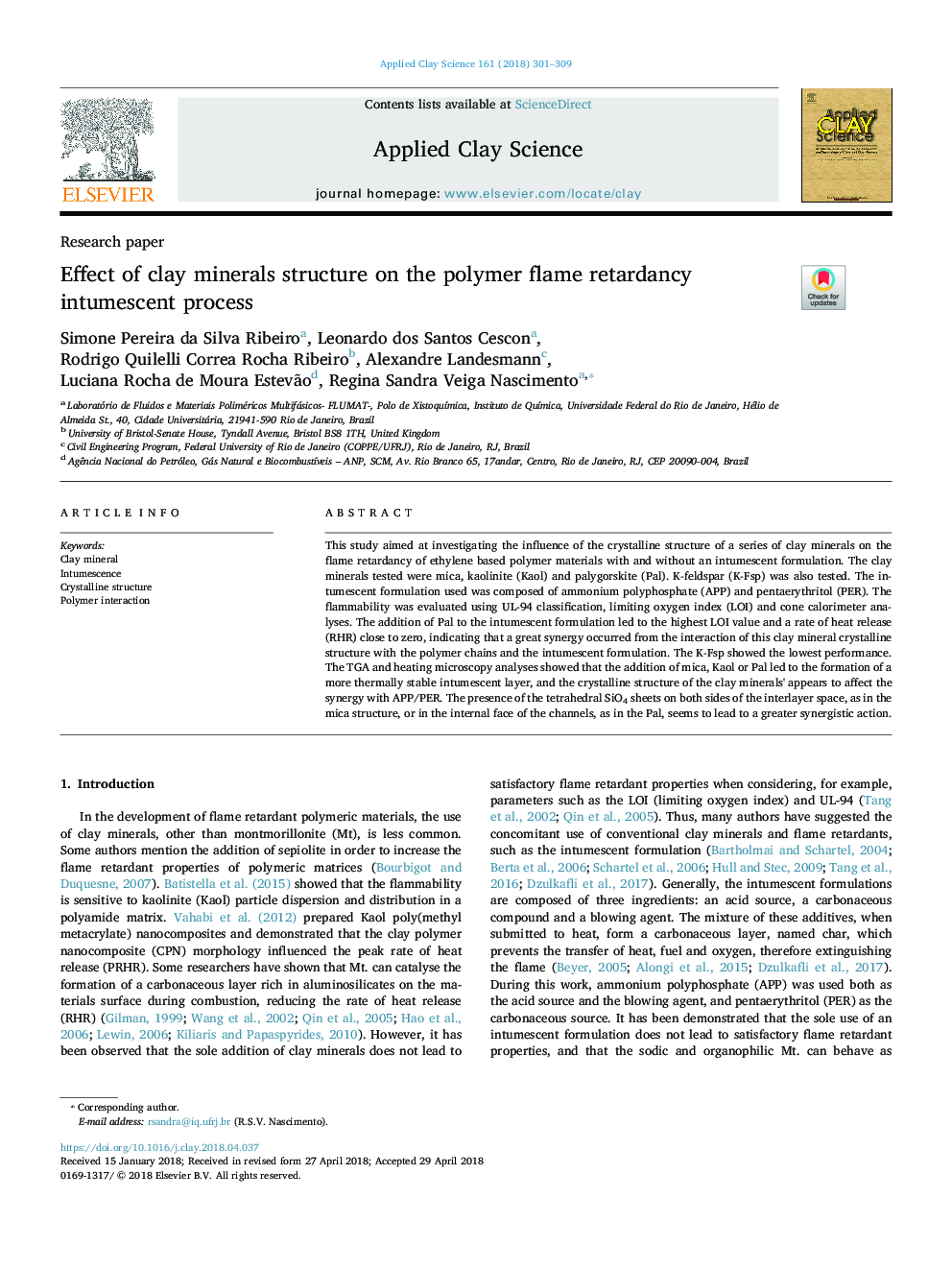| Article ID | Journal | Published Year | Pages | File Type |
|---|---|---|---|---|
| 8045813 | Applied Clay Science | 2018 | 9 Pages |
Abstract
This study aimed at investigating the influence of the crystalline structure of a series of clay minerals on the flame retardancy of ethylene based polymer materials with and without an intumescent formulation. The clay minerals tested were mica, kaolinite (Kaol) and palygorskite (Pal). K-feldspar (K-Fsp) was also tested. The intumescent formulation used was composed of ammonium polyphosphate (APP) and pentaerythritol (PER). The flammability was evaluated using UL-94 classification, limiting oxygen index (LOI) and cone calorimeter analyses. The addition of Pal to the intumescent formulation led to the highest LOI value and a rate of heat release (RHR) close to zero, indicating that a great synergy occurred from the interaction of this clay mineral crystalline structure with the polymer chains and the intumescent formulation. The K-Fsp showed the lowest performance. The TGA and heating microscopy analyses showed that the addition of mica, Kaol or Pal led to the formation of a more thermally stable intumescent layer, and the crystalline structure of the clay minerals' appears to affect the synergy with APP/PER. The presence of the tetrahedral SiO4 sheets on both sides of the interlayer space, as in the mica structure, or in the internal face of the channels, as in the Pal, seems to lead to a greater synergistic action.
Related Topics
Physical Sciences and Engineering
Earth and Planetary Sciences
Geochemistry and Petrology
Authors
Simone Pereira da Silva Ribeiro, Leonardo dos Santos Cescon, Rodrigo Quilelli Correa Rocha Ribeiro, Alexandre Landesmann, Luciana Rocha de Moura Estevão, Regina Sandra Veiga Nascimento,
